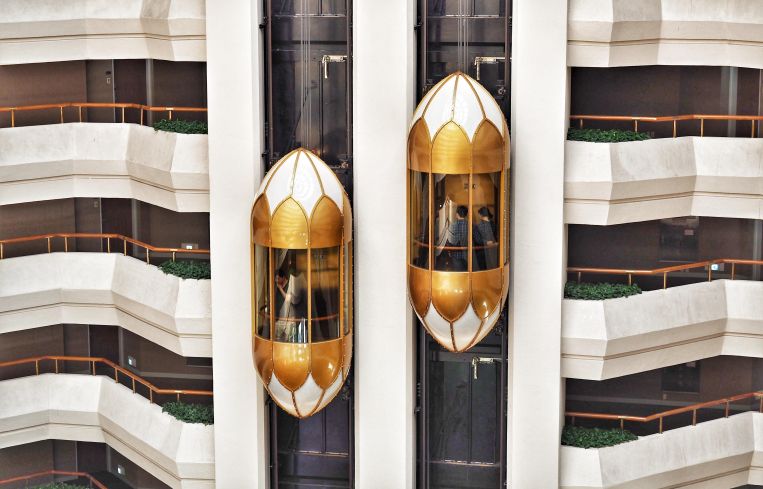Presented By: CREXi
Top CRE Trends to Jumpstart Your 2021
Explore the data behind how investors are preparing for the new year

As this uncommonly turbulent year winds to a close, investors are taking stock and preparing for a strong entrance into the recovery promised in 2021. COVID vaccines are finalizing trials and preparing for distribution, a new White House administration is transitioning into power, and optimistic analysts predict a summertime return to some measure of economic normalcy.
With these touchstones in mind, commercial real estate investors are readying their dry powder to take advantage of boosted cap rates and profitable investment options in markets nationwide. This piece explores the commercial real estate trends that are expected to unfold in 2021, with an eye towards relevant data and patterns from the current year.
Investors are using this time to explore hidden gem markets.
Now, more than ever, investors are using new CRE technology to explore commercial property investments beyond their immediate markets. An investor based in Nevada can easily search for assets in Atlanta, connect with a local broker, and transact the deal digitally.
As these investment pathways become more widely available, Commercial Real Estate Exchange Inc. (CREXI) has observed increasing interest in smaller, hyper-local markets.
In Q3, the Providence-Warwick, R.I., metropolitan statistical area (MSA) saw a 196% increase in buyer interest, continuing a high-growth trend stretching back to Q1. Denver and New Orleans both sustained similar buyer interest levels quarter-over-quarter, with 160% and 142% gains in Q3, respectively. These three cities were also among the only ones to withstand Q2’s overall pause in commercial real estate activity regarding buyer actions on the platform.
Minneapolis, Seattle, Portland, and Cincinnati were among additional top MSAs that experienced the highest surge in Q3 buyer interest, taking the top six spots after Providence. Conversely, larger metros, such as New York and Los Angeles, saw gains that merely replaced lost buyer interest in the first months of COVID.
In 2021, we’ll likely see continued, diversified interest in secondary and tertiary markets. Investors will continue looking for hidden gem markets that are currently proving their resilience in the face of pandemic-related lockdowns.
Metropolitan assets are down, but not out.
While urban populations’ departure to the suburbs bodes well for investors focused on smaller regional markets, this hardly spells doom for cities. Metro markets, such as New York and San Francisco, are no strangers to natural disasters. They have withstood the Great Financial Crisis, earthquakes and hurricanes, and come out all the stronger for their experience.
For example, Manhattan saw 200 deals completed in 2009 — nearly the exact number we’ll see this year on an annualized basis. In the three years since, NYC commercial real estate deals comprised a total sales volume of $50 billion over 900 transactions: a nearly five-fold increase. While this is no guarantee of future performance, investors are eyeing opportunities available at discounted rates in the market.
Indeed, deals are still getting done in both metros. Facebook, this year, leased a 730,000-square-foot space in New York’s Garment District, and two office buildings in San Francisco’s SoMa and Mid-Market areas transacted for $192 million.
Why are investors still bullish on cities? Since 2010, major metro areas have observed college-educated millennials from age 25 to 34 produce approximately 50% of population gains near central business districts. Interestingly, the same trend popped up following the 1918 Spanish Flu pandemic: young people were more willing to accept the short-term risks of living in urban cities in exchange for long-term financial opportunities.
As the coronavirus pandemic eventually runs its course and the economy starts its recovery, international cities like New York and San Francisco could re-solidify their positions as central business hubs, while offering high-gains bargains for commercial real estate investors.
Despite COVID setbacks, retail is poised to make a comeback.
Following a challenging year, investors are eyeing 2021 for potential, high-gain recoveries in the retail market. While analysts predict we likely won’t see a return to normalcy until mid-2021, commercial investors are looking ahead to take advantage of expansion or formerly inaccessible retail markets.
In Q3, we saw a surge in the number of retail assets listed on Crexi, with approximately 47% of properties priced under the $1 million mark. As of November, the asset class has seen four consecutive months of price-per-square-foot gains, pointing to a slow-starting recovery in the coming year. Typically, retail assets hit the market in Q3, ahead of the consumer spike amid holiday shopping. A slowdown follows in Q4, while shops conclude their busiest season, and brokers and investors slow down transactions at the end of the year.
As perceptive CRE investors know, one of the best times to buy is when no one else is looking. Many different retail assets perform at various levels of success, depending on each market’s unique conditions. Discerning investors will likely find retail opportunities post-COVID in region-specific markets, such as the Midwest, so-called 18-hour cities, and Sunbelt metros. And, while future-proofing a retail investment in a post-COVID world will take some creativity, retail stands to make high-value gains when shoppers inevitably return to in-store consumerism.
Deals, overall, are slowing in the holiday season, but we will likely see a surge of assets hit the market in early 2021. And investors are ready: retail properties are, by far, the most-viewed by buyers on Crexi, accounting for nearly twice as much activity as the next most-viewed asset — multifamily.


